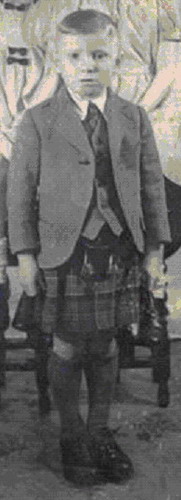Brit-Am Now no. 1442
The Lost Ten Tribes of Israel Movement
10 January 2010, 24 Tevet 5770
Contents:
1. Dennis McGinlay as a Lad in Tartan
2. Answers to Historical Criticism of Brit-Am: Cimmerians and Scythians
3. New Article:
Tartan in Scotland
|
Brit-Am Discussion Group |
Contents by Subject |
Research Recognition Reconciliation Contribute |
|
Site Map Contents in Alphabetical Order |
This Site |
1. Dennis McGinlay as a Lad in Tartan
From: Dennis Mc <dennismcginlay@uwclub.net>


